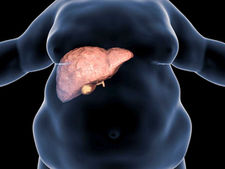
Problems Seen During Menstrual Period
Menstrual irregularity The menstrual cycle lasts 28 days on average. If this period becomes longer or shorter, or if there is bleeding between two menstruals, there is menstrual irregularity. Or if the menstrual period skips 2 or 3 periods, it also means that there is menstrual irregularity. In some cases, menstruation stops due to reasons such as pregnancy or menopause. This is called Amenorrhea. Menstrual irregularities can be caused by stress, hormonal disorders, birth control pills, the presence of myomas, polyps in the uterus, polycystic ovary syndrome, etc. It also causes discomfort. Lifestyle changes (diet and regular exercise), hormones such as estrogen or progestin, and painkillers are used for treatment. If there is a condition that causes menstrual irregularity (polyp, myoma, etc.), their treatment is carried out separately and menstrual regulation is ensured.
Premenstrual tension syndrome (PMS) is a syndrome with somatic and psychological symptoms seen in the luteal phase of the menstrual period. It is a condition in which the individual experiences a feeling of tension starting seven days before the menstrual period begins. While it affects the quality of life in some women with severe problems, in some women it varies from moderate to mild. Physical symptoms include headache, abdominal pain, back pain, weight gain, chest bloating. Psychological symptoms include sensory changes such as irritability, tension, depression, and depression. This situation negatively affects the quality of life of individuals. Cognitive-Behavioral Therapy for premenstrual tension syndrome (PMS) treatment methods are carried out as a combination of lifestyle changes and regulation, pharmacotherapy and non-pharmacological treatment methods. Dysmenorrhea (Painful Menstruation) Contraction occurs as a result of chemicals called prostaglandin affecting the uterine muscles. Contractions affect blood flow and oxygen connection to the uterus. These contractions cause pain during menstruation. During menstrual period, throbbing or cramping pain is observed in the lower abdomen. This situation starts approximately 1-3 days before the menstrual period and continues for 3-4 days after the menstrual period.
In some women, it starts from the first menstrual period, and in some women, it may occur in the following years. It can be severe and painful, similar to labor pains. In addition to pharmacological treatment methods such as non-steroidal anti-inflammatory drugs and birth control pills, non-pharmacological treatment methods are also used for the treatment of painful menstruation. Menopause, which occurs in women mostly due to age, occurs with the decrease in ovulation and the decrease in female hormones such as progesterone and estrogen. Late menopause may occur, or early menopause may occur if it occurs earlier than expected. It is possible to say that the average age of menopause is 46-48 years. While a woman entering menopause before the age of 40 is defined as early menopause, in our country, entering menopause around the age of 52 can be considered late menopause. Symptoms of menopause include menstrual irregularity, hot flashes, headache, irritable mood, and anxiety disorder. Diagnosis is made by looking at LH and FSH levels in blood tests performed by the doctor. Gynecological problems in childhood and adolescence (Pediatric and adolescent gynecology) Gynecological problems for women can start between the ages of 0-14.
Physicians specialized in pediatrics and adolescent gynecology provide support for gynecological diseases of this age group. It is a specialty that deals with health problems in the uterus, ovaries, vulva and pelvic area of children and adolescents during childhood and adolescence. In women, menstruation may occur between the ages of 10-15. During puberty, a woman may experience excessive menstruation, menstrual irregularity, ovarian cysts, painful menstruation, dysfunctional menstruation, etc. The problems are treated by a gynecologist with a specialty called adolescent gynecology. Excessive hair growth and problems related to breast development are also within the expertise of this field. In some cases, this gynecological area examination is required for gynecological problems that may be congenital or hereditary or developmental in adolescence or childhood.
A child and adolescent gynecologist is needed for many areas such as menstrual problems, deformities in the vaginal structure (some congenital or developmental skin boils, etc.), anomalies and pains, and ovarian problems. It is recommended by obstetricians that the first gynecological examination be between the ages of 13 and 15. It is important to perform an examination with the onset of menstruation in adolescents and to monitor their development.
FOR INFORMATION AND APPOINTMENT, YOU CAN LEAVE YOUR NUMBER OR ASK OUR EXPERTS
YOU CAN LEAVE YOUR NUMBER FOR INFORMATION AND APPOINTMENT AND ASK QUESTIONS TO OUR EXPERTS



-04.png)
-06.png)
-05.png)
-08.png)
-07.png)























